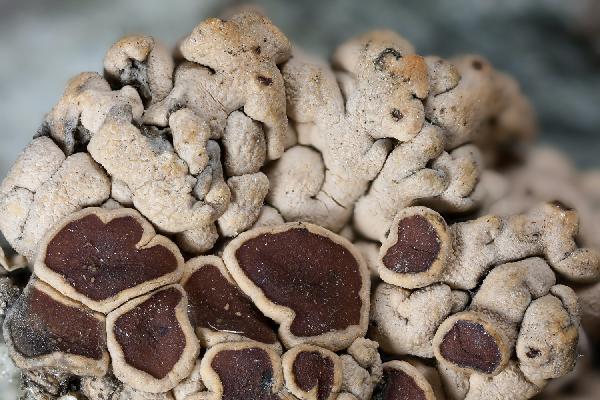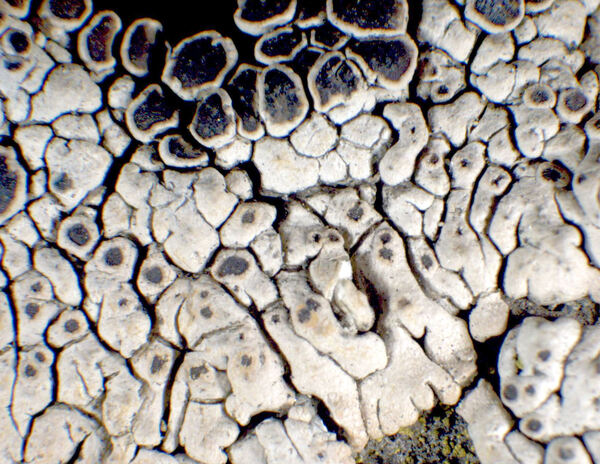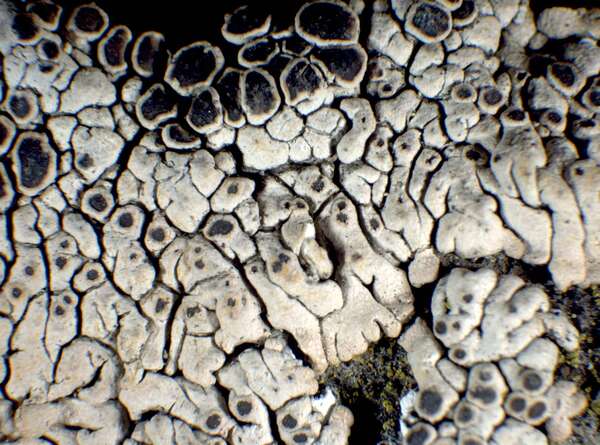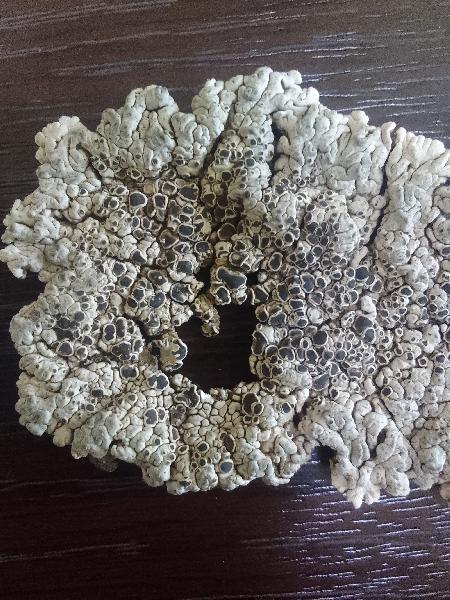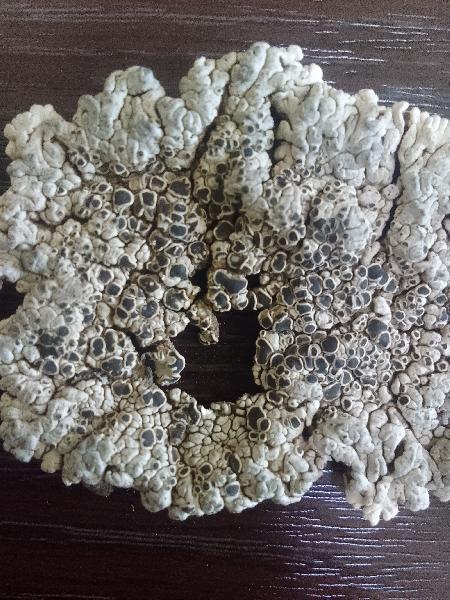Lobothallia alphoplaca (Wahlenb.) Hafellner
Acta Bot. Malacitana, 16, 1: 138, 1991. Basionym: Parmelia alphoplaca Wahlenb. in Ach. - Meth. Lich.: 428, 1803.
Synonyms: Acarospora polycarpa Th. Fr.; Aspicilia alphoplaca (Wahlenb.) Poelt & Leuckert; Lecanora alphoplaca (Wahlenb.) Ach.; Lecanora alphoplaca var. inflata Ach.; Lecanora inflata (Ach.) Jatta; Lecanora melanaspis var. alphoplaca (Wahlenb.) Th. Fr.; Placodium alphoplacum (Wahlenb.) Link; Placodium alphoplacum var. inflatum (Ach.) Arnold; Placodium inflatum (Ach.) A. Massal.; Squamaria alphoplaca (Wahlenb.) Duby; Squamaria alphoplaca f. olivacea Anzi
Distribution: N - Frl, TAA (Watson 2014), Lomb, Piem (Morisi & Sereno 1995, Isocrono & al. 2004, Morisi 2005), VA (Borlandelli & al. 1996, Piervittori & Isocrono 1997, 1999, Watson 2014), Emil (Nascimbene & al. 2021). C - Sar. S - Cal (Puntillo 1996), Si (Merlo 2004b, Puglisi & Cataldo 2019).
Description: Thallus crustose-placodioid, episubstratic, loosely attached, 1.5-5 mm thick in central parts, white to cream-coloured, more rarely ash-grey or greyish brown, turning pink in the herbarium, usually epruinose, forming regular or irregular rosettes, areolate in central parts. Central areoles up to 1 mm wide, discrete, flat to convex, often mixed with elongated lobes; marginal lobes 3-5(-8) mm long, 0.5-1(-1.3) mm wide, contiguous to overlapping, flat to usually strongly convex or almost cylindrical, incised-lobed. Upper cortex paraplectenchymatous, brownish, inspersed with both dark brown granules soluble in K and with coarse hyaline granules insoluble in K, overlain by a c. 15 µm thick epinecral layer; medulla white, loose to almost hollow, with hyaline granules insoluble in K; lower cortex paraplectenchymatous. Apothecia lecanorine, usually crowded and deformed in thallus center, 0.4-1.5(-2.5) mm across, sessile to somewhat stalked, with a dark reddish brown to black, flat to convex disc, and an entire, raised, 0.2-0.3 mm wide thalline margin. Thalline exciple corticate, 20-40 µm thick; medulla paraplectenchymatous, of thick-walled hyphae, with hyaline, coarse granular crystals insoluble in K; epithecium greenish brown, with superficial hyaline granules insoluble in K, N+ faintly greenish brown; hymenium colourless, 70-85 µm high; paraphyses mostly simple, coherent, c. 2.5 µm thick at mid-level, the upper 3-4 cells submoniliform, up to 6 µm wide; hypothecium colourless, subtended by an algal layer. Asci 8-spored, oblong-ellipsoid, the thin outer coat K/I+ blue, the wall and apical dome K/I-. Ascospores 1-celled, hyaline, short-ellipsoid, (9-)11-16 x 5-9(-11) µm. Pycnidia black. Conidia hyaline, bacilliform, aseptate, 4-8 x c. 1 µm. Photobiont chlorococcoid. Spot tests: thallus K+ yellow turning red, C-, KC-, P+ orange. Chemistry: norstictic and constictic or salazinic acids.Note: a widespread species with an apparently disjunct distribution in mountain areas of the Northern Hemisphere, found on compact siliceous rocks wetted by rain in upland areas; locally abundant only in the Alps, wherever appropriate substrata are available.
Growth form: Crustose placodiomorph
Substrata: rocks
Photobiont: green algae other than Trentepohlia
Reproductive strategy: mainly sexual
Commonnes-rarity: (info)
Alpine belt: rather rare
Subalpine belt: rare
Oromediterranean belt: very rare
Montane belt: rather rare
Submediterranean belt: absent
Padanian area: absent
Humid submediterranean belt: absent
Humid mediterranean belt: absent
Dry mediterranean belt: absent
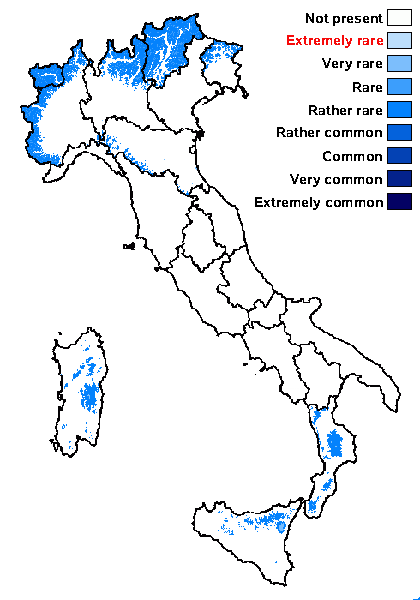
Predictive model
Herbarium samples
Growth form: Crustose placodiomorph
Substrata: rocks
Photobiont: green algae other than Trentepohlia
Reproductive strategy: mainly sexual
Commonnes-rarity: (info)
Alpine belt: rather rare
Subalpine belt: rare
Oromediterranean belt: very rare
Montane belt: rather rare
Submediterranean belt: absent
Padanian area: absent
Humid submediterranean belt: absent
Humid mediterranean belt: absent
Dry mediterranean belt: absent

Predictive model
| Herbarium samples |
 INDEX FUNGORUM
INDEX FUNGORUM
 GBIF
GBIF
 DOLICHENS
DOLICHENS
